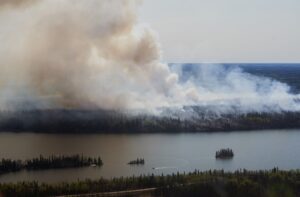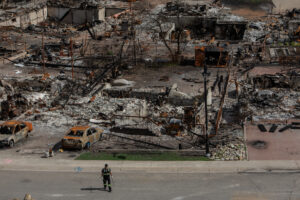
As Canadians, Americans and Europeans are learning over the past two days, where there is smoke, there is not always fire.
But where there is smoke damage, coverage is available under a comprehensive home insurance policy, subject to the terms and conditions of the policy, Insurance Bureau of Canada (IBC) tells Canadian Underwriter.
Typical language used in comprehensive home insurance policies refers to coverage for smoke damage that is “sudden and accidental,” which applies to smoke emanating from wildfires.
Coverage generally applies to damage to a home’s structure (walls, ceilings, etc.), damage to personal belongings, and additional living expenses.
Wildfire smoke damage is covered anywhere, regardless of the origin of the smoke. “There is no separate or different distinction for fire versus smoke damage — fire and smoke damage are covered under a standard home insurance policy,” IBC told CU.
Smoke has shrouded many provinces in Canada, as wildfire hotspots in Manitoba, Saskatchewan, Alberta, and in northeastern B.C., have caused at least 33,400 Canadians to evacuate their homes, CBS reports. That includes 17,000 reported evacuations in Manitoba, where the province has declared a state of emergency, and another 15,000 in Saskatchewan.
Growing technical talent: A strategy for the next generation of adjusters
Environment Canada has issued air quality alerts due to wildfire smoke throughout Alberta, Saskatchewan, Manitoba, Ontario, Quebec, and parts of Atlantic Canada. Meanwhile, wildfire smoke has drifted into many U.S. states and as far away as Europe.
Even when the origins of wildfire smoke are distant, a property in, say, New York could conceivably make a damage claim against their home insurance policy for smoke emanating from a Manitoba or Quebec wildfire.
“The New York homeowner would claim from their own insurance provider for their home, if they have smoke damage,” IBC responded when CU posed the hypothetical scenario.
“The claim would be assessed based on the terms, conditions and limits of the New York home insurance policy. No subrogation/recovery from a Canadian insurer would take place, since the Canadian insurer is not liable for damages in New York.”
In an analogous Canadian example, smoke damage to a property in Northern Ontario caused by a Manitoba wildfire is covered under a home insurance policy, subject to the policy’s terms and conditions.
- Common policy exclusions for smoke damage include:
- Gradual or repeated smoke damage (i.e. from a fireplace, poor ventilation, or someone who smokes in the home), which would be considered maintenance issues
- Smoke from nearby agricultural or industrial operations
- Intentional acts by the insured
- Pollution exclusions
- Odour-only issues (smoke that doesn’t cause any physical damage)
Canada’s wildfire season is just getting started. As of June 4, Natural Resources Canada reports 1,732 wildfires nationally, which have burned through 2.2 million hectares, in 2025 thus far.
That’s an average number of fires, but three times the average acreage burned for this time of the year. “Normally, an average of 2.5 million hectares of land are consumed in Canada every year,” Natural Resources Canada reports.
In 2023, Canada’s most destructive wildfire season ever, more than 6,000 fires torched 15 million hectares of land.







